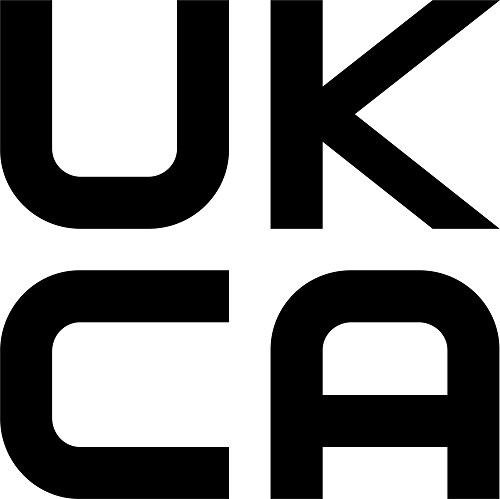The new UKCA and CE Marking once the BREXIT transition period ends at the end of 2020 – Update and Two FREE Webinars
28 Sep 2020
 The UK Government is planning to introduce a new UK version of the CE Mark: the UKCA Mark.
The UK Government is planning to introduce a new UK version of the CE Mark: the UKCA Mark.
Why do we need a UKCA mark?
Although many Trade bodies and BFPA members have opposed the UK government introducing a UK quality mark in the event of no deal, the UK Government advises that the rationale behind why UKCA is required is:
“CE marking can only be used to show conformity with EU rules. The UK is obliged to introduce a domestic marking in order to be able to show that goods are compliant with UK rules when we are no longer in the EU. As has been stated previously on day one these rules will be the same – which does allow the UK to introduce the continuity approach of accepting CE marking on the UK market for a short period to assist UK importers. The UKCA framework will also allow UK notified bodies to continue to operate. They cannot approve CE marking as this is an EU legal construct and EU will no longer recognise UK notified bodies as being able to approve CE marking. The UKCA mark is also required so it can cater for any mutual recognition etc in trade agreements with third countries.”
BEIS gave a presentation in September 2020 to update the latest position on CE marking – the content is shown below (UKCA Mark presentation from BEIS September 2020 to download the slides if you prefer)
End of the UK Transition period – Some useful links:
- Placing-manufactured-goods-on-the-market-in-great-britain-from-1-january-2021
- Placing-manufactured-goods-on-the-eu-market-from-1-january-2021
- Using-the-ukca-mark-from-1-january-2021
- Conformity-assessment-bodies-change-of-status-from-1-january-2021
- The Border Operating Model
Placing goods on the GB market – after 1 January 2021
Placing goods on the market – UKCA
- From the 1 January 2021 the essential requirements and standards that can be used to demonstrate compliance will be the same as they are now.
- Businesses are encouraged to use the new UKCA mark and regime as soon as possible after 1 January 2021.
- However, to allow businesses time to adjust, HMG has agreed CE marked goods that meet EU requirements can continue to be placed on the GB market until 1 January 2022 in most cases*
- If you have already placed your good on the UK or EU market – in circulation- before 1 January 2021, you do not need to do anything.
Conformity markings and declarations of conformity
- From 1 January 2021 products assessed against GB rules by a GB ‘Approved Body’ will need the UKCA marking.
- If you self-certify or use an EU Notified Body you will still be able to use the CE marking until 1 January 2022 even for goods that are manufactured after 1 January 2021.
- For 24 months after the 1 January 2021 (until 1 January 2023), for most CE marked goods you have the option to affix the UKCA marking on a label affixed to the product or on an accompanying document.
- You can place the UKCA and CE marking on the same product if it is destined for both the GB and EU markets (so long as the product meets the relevant regulatory requirements for both markets)
- If you use the UKCA mark you will need to draw up a UK declaration of conformity. This should be available to market surveillance authorities on request.
Conformity assessment bodies
- All UK-based EU ‘notified bodies’ will automatically become UK approved bodies from 1 January 2021. (listed on the EU NANDO database & UKAS website)
- Manufacturers may require separate UK and EU certificates from 1 January 2021 – businesses are encouraged to arrange for separate certificates well in advance of this date.
- Outside of any mutual recognition agreement as part of the UK-EU negotiations, mandatory conformity assessments by EU bodies will no longer be recognised in the UK after January 2022.
Economic operators
- From 1 January 2021 all authorised representatives for the GB market must be based in GB or NI. Generally authorised representatives are optional.
- From 1 January 2021, GB based distributors of EU goods will become importers (and vice-versa).
The importer may also need to indicate their name and address on the product or documentation, keep a copy of the declaration of conformity, and ensure the technical documentation can be made available on request.
For 24 months from 1 January 2021, for most CE marked goods being placed on the GB market this additional address can go on an accompanying document rather than on the product.
Placing goods on the EU market – after 1 January 2021
- Outside of any potential mutual recognition agreement, from 1 January 2021 conformity assessments by UK notified bodies will no longer be recognised in the EU. Voluntary testing is not impacted.
- Where legislation currently allows for self-declaration of conformity for the EU market, it will continue to do so at the end of the transition period. The manufacturer can affix the CE marking and draw up the EU Declaration of Conformity. This can be done even when they are not based in the EU.
- UK-based Authorised Representatives will also no longer be recognised in EU after the 1 January 2021. Although for most CE marked goods Authorised Representatives are optional.
- Products that have already been placed on the EU27 or UK market before the end of the transition period will not be impacted.
- From 1 January 2021, EU based distributers of GB goods will also become importers. The importer may also need to indicate their name and address on the product or documentation, keep a copy of the declaration of conformity, and ensure the technical documentation can be made available.
END OF PRESENTATION
BFPA has been working with BEIS and EAMA to try and keep up to date with developments in this area. BEIS responded to a letter from EAMA sent to Alok Sharma a couple of weeks ago, to express concerns about the process and the short timeline for the adoption of the UKCA mark to avoid potential chaos at borders, on 25 August 2020 as follows: “…the business department (BEIS) has re-iterated that UKCA marking ‘will come into force at the end of the [Brexit] transition period, so will be valid for products being sold in GB after 1 January 2021’.”
“Guidance on the UKCA mark, and on the status of CE marking in the UK from 1 January 2021, will be published ‘in due course’, and exact requirements in respect of the UKCA will in part depend on the outcome of trade negotiations with the EU”. BEIS added that it recognised the challenges faced by businesses in preparing for the end of the Brexit transition period.
Meanwhile, there is no clarity as to whether there will be a UKNI mark for Northern Ireland. There is provision for such a mark in the EU/UK Withdrawal Agreement. Whether one is required – along with much else to do with Northern Ireland – will depend on the outcome of the current talks.
Two new FREE webinars have been announced on this subject.
BEIS Webinar one – UKCA and CE Marks on Thursday 8 October at 11:00 am
This webinar, on the UKCA mark and the phasing out of the CE mark. It will cover the essentials of the new guidance issued by government and invite firms to raise questions. Key points regarding the UKCA and CE marks can be summarised in this way:
- Little changes on January 1 in terms of CE marking – there is (for want of a better term) a transition period.
- Introducing the UKCA mark is a firm policy decision and will happen regardless of whether we get a free trade deal with the EU or not.
- Firms should be looking over the coming weeks as how they will transition to UKCA mark – they should not make the mistake of ignoring this issue into 2021.
BEIS Webinar two –Border Operating Model on Tuesday 15 October at 11:00 am
This webinar will be on the UK’s Border Operating Model, relating to the controls to be placed on the movement of goods between Great Britain and the EU.
If you would like to attend either of these webinars, or both, please email Chris Buxton at ChrisBuxton@bfpa.co.uk and he will send you the links.
Both webinars will be presented on Zoom and will be free of charge. The emphasis is planned to be upon questions and answers so there should be plenty of opportunity to ask questions of the BEIS speaker(s).

